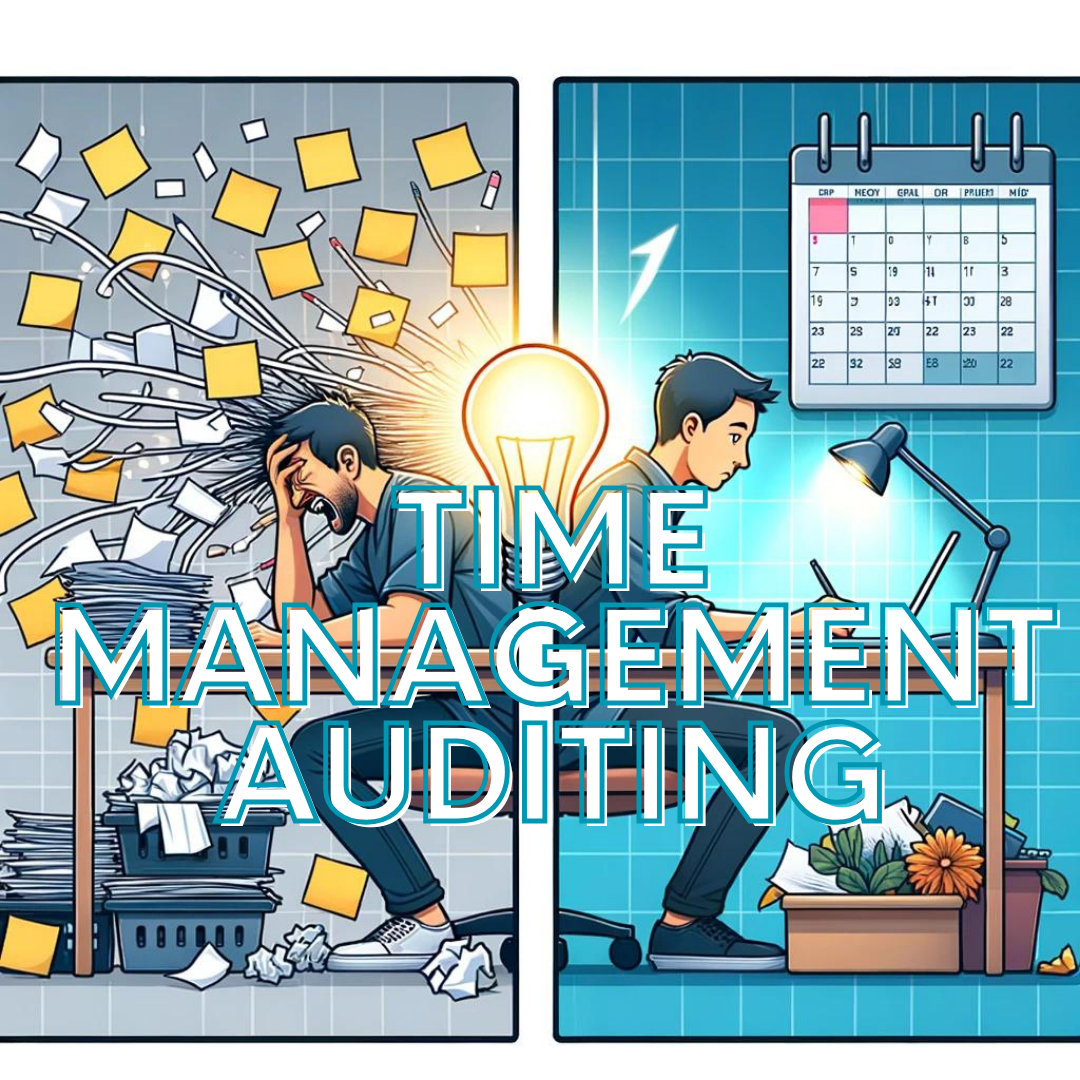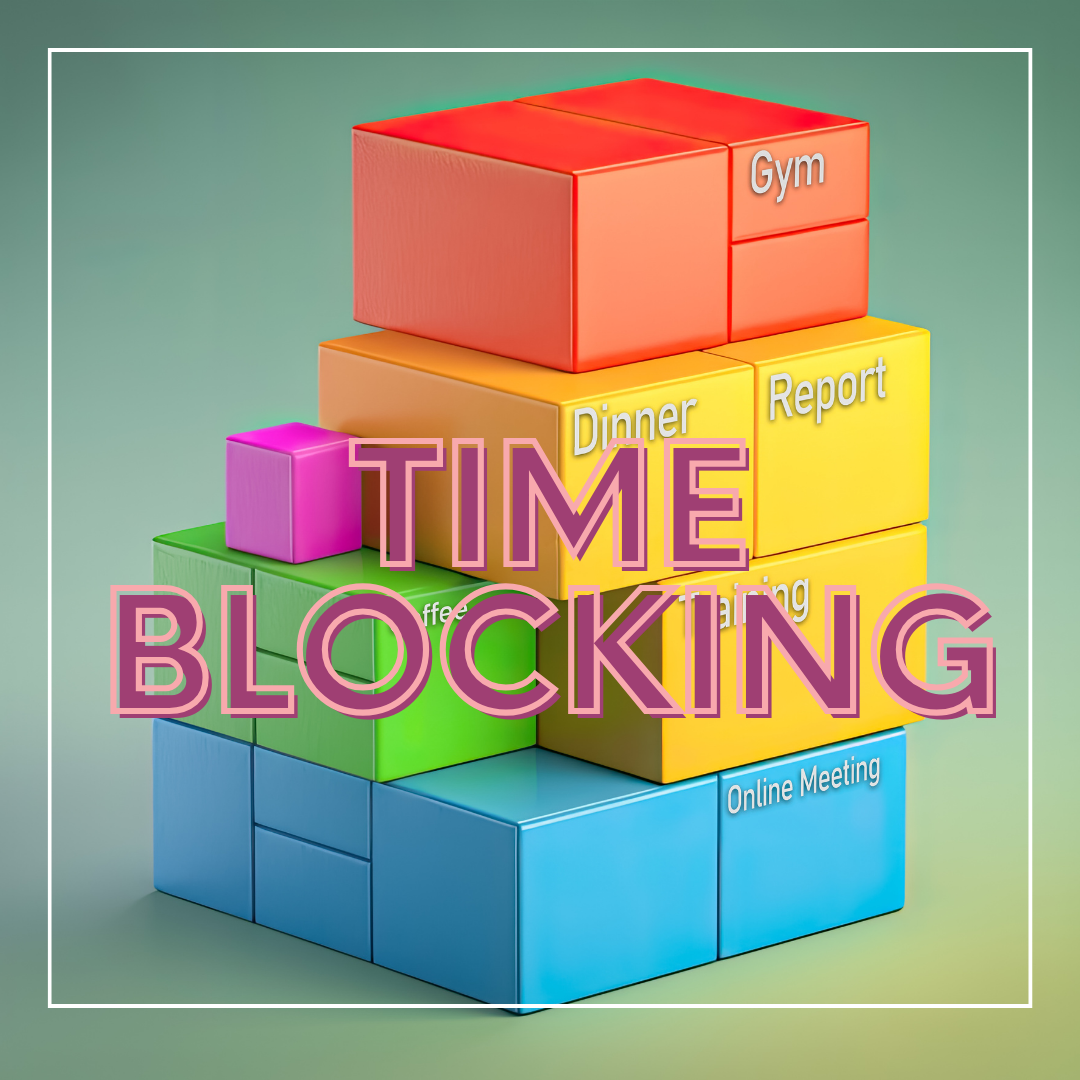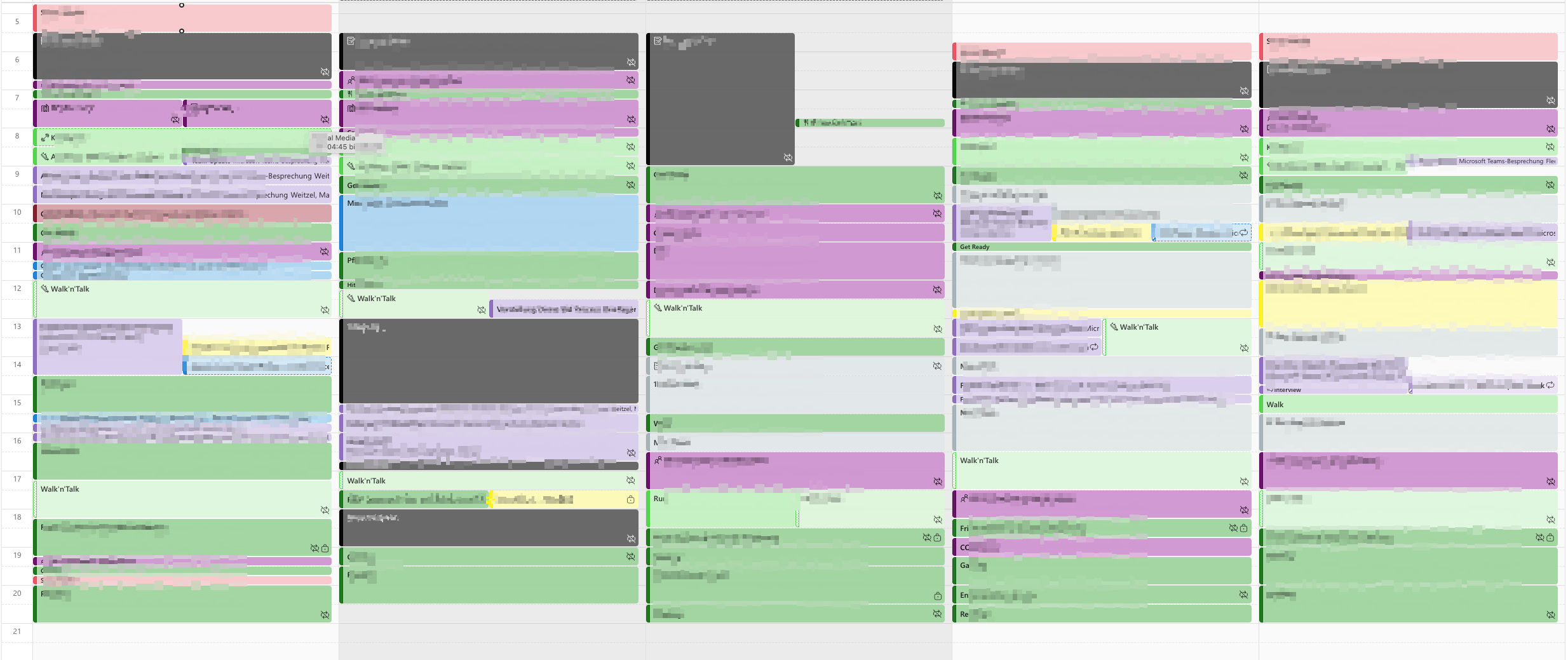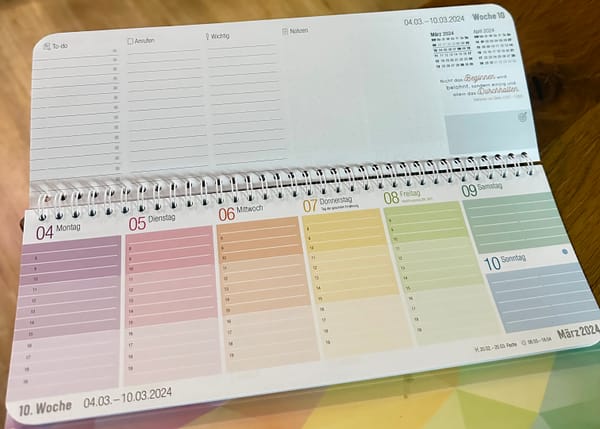Time Management Audit: Steps to Pinpoint and Improve Your Effectiveness
This article explains how to perform a Time Audit based on your Time Blocking habit. It helps you pinpoint potential improvements in how you allocate your time.

Using Time Blocking to Maximise Time Effectiveness
Just three weeks ago, I began applying Time Blocking, and I am extremely pleased with the outcome. It was my hope to align my desired use of time with my actual use of time more closely.
Not only does Time Blocking aid in mapping out your day or week, it also provides a retrospective look at how effectively you spent your time, assuming that you've adjusted your Time Blocks in your calendar to accommodate day-to-day changes, which typically occur around 4-5 times daily.
So, your calendar first informs you about what you plan to accomplish and then, retrospectively, what you have actually done.
Here's something intriguing I’ve discovered this way:
Recently, I felt somewhat unsatisfied because many of my Time Blocking plans were not falling into place as I had anticipated. I felt as though I was not getting very far. However, when I looked at the tasks I had scheduled for the week compared to what I actually achieved, as well as the same for the past weekend, I found that despite my sense of insufficient progress, I had actually accomplished more than ever.
During the week, I had 25 tasks, and only two were left uncompleted and had to be postponed to the following week (8%). I had overestimated how much I could do on the weekend with 12 tasks, but in the end, only two tasks were left uncompleted (17%). These are impressive results, as typically, I don't even manage to complete half of what I plan.
Upon assessing my time investments across all tasks according to different aspects of life, I was able to determine whether my overall time investment was balanced:

Taking out the time I spent sleeping, over the last 3 weeks, my time investment was as follows:
- Health & Fitness: 21.6%
- Weight training
- Cardio
- Walks
- …
- Leisure: 20.6%
- Family & Relationships
- Reading & Entertainment
- Learning & Knowledge Acquisition
- …
- Progress: 39.8%
- Meetings
- Tasks related to work
- Side businesses
- …
- Overhead: 18.6%
- Note keeping & task management
- Cooking & Eating
- Basic life activities / Getting ready
- …
Looking at these statistics, I’m rather content, and it’s a clear improvement from before I started Time Blocking when I was wasting over 30% of my time.
In essence, I'm not far from my desired target. I just need to find a way to convert 8.6% of the 'overhead' time into time spent on 'progress', which equates to about 1.3 hours per day.
Great! Now let me share with you how you can achieve the same thing.

How to Use Time Blocking to Conduct Your Own Time Management Audit
Step 1: Plan your day using Time Blocking.
To start actual Time Management Auditing, you must first manage your daily tasks using your calendar (="time blocking").

Please refer to my Time Blocking blog post for details, but I'll summarize the steps here:
- Choose a digital calendar tool. It’s easier to make amendments in a digital calendar than on paper, given the inevitability of daily changes. I utilize my Outlook work calendar because it has all my work meetings.
- Set daily routines as recurring appointments (morning rituals, exercise, walks, meals, reading, etc.).
- Develop a habit of brainstorming for tasks for the following week or pick tasks from your to-do list every Saturday or Sunday. Prioritise the tasks based on importance and urgency.
- Ensure that no single task takes over 2.5 hours. If a task would, you need to divide it into subtasks beforehand.
- Start scheduling your top tasks in your mornings. Dedicate each day to exactly one of the top 5 tasks. These tasks will be your Most Important Tasks (MIT) each day.
- Spread the rest of your tasks across your afternoons. It's a bit like playing Tetris when arranging tasks around your meetings.
- Soon, you'll master how to smartly group your meetings, saving chunks of time for tasks and preventing your day from being broken up.
- Decide on the duration of the Time Blocks:
- For those tasks you want to complete more creatively and efficiently, allot slightly less time than you anticipate.
- For other tasks, make the Time Block 25-50% longer than necessary to have a buffer for unexpected matters.
Finally, an important point to note is that even after scheduling your urgent and essential tasks for the week, you may still have a few free slots for tasks. Some people make the mistake of filling these gaps with additional but non-essential tasks to avoid 'wasting' time.
This approach is time-consuming and unproductive, offering neither value nor relaxation—an odd middle ground.
It's better to end your day earlier and enjoy some leisure time.

Step 2: Use a colour-coding system for your Time Blocks
To simplify Time Auditing, I suggest using a colour-coding system for your Time Blocks. For instance, here's how I do it:
- Black: Personal Organization
- Purple: Side Business
- Light Green: Health & Fitness
- Dark Green: Personal Time
- Dark Blue: Meetings
- Light Blue: Work Tasks
Though I don't have a designated colour for every aspect of my life, this distribution amongst the essential components, such as Work, Side Business, Leisure, and Exercise, helps without cluttering the calendar with too many colours.

Step 3: Keep your calendar within reach at all times.
Some people make the mistake of preparing their week's calendar with Time Blocks over the weekend, only to look at it once in the morning and once at the end of the day, only to realise their plans were not executed as intended.
This is where Time Blocking can either succeed or fail.
Essentially, your calendar should accompany you always. Set a timer at the start of every Time Block to keep a visual reminder of how far into the block you are. If you overrun, adjust and update the Time Block accordingly.
This is when the benefits of Time Blocking become clear. Going over time on one task means another won't get finished or is given less time.
This exercise leads to valuable realizations and fosters positive changes:
- Promptly ending Time Blocks even if the work is incomplete.
- Figuring out creative ways to finish tasks quicker.
- Abandoning tasks that lose their importance in comparison to others.
- Planning Time Blocks with buffer periods to prevent constant changes.
- Setting shorter Time Blocks to create a sense of urgency.
- etc.
All of these processes are conditional upon using the calendar continuously and recording your factual time usage retrospectively.
At the end of the day, the calendar provides an exact account of how the day proceeded.

Step 4: Make Time Auditing Part of Your Routine
Now that we're finished with Step 3, we can complete our Time Management Audit. All we need now is a routine.
I suggest allocating a quick 15-minute slot in your morning routine where you tabulate the volumes of each life aspect based on your daily account in the calendar.
Here's my table as a template for you. Duplicate it in Google Sheets or export it to Excel and adjust it for your needs.
Record the life aspects you wish to monitor in the columns. I recommend adhering to a basic structure as per my example.
Also, state an "Ideal Daily Schedule", where you determine the ideal volume each life aspect should have. This will be your reference point.
I've made the table available as a Google Sheets template for reference. Feel free to duplicate it for your usage. You can export it to Excel if that's your preferred tool.
Once you've done this for a few days, you can assess your time usage, as depicted at the top of this article in a pie chart.
Step 5: Conclude from Your Audit
Now you can assess your time investment. For example, I've been spending too much time on note-taking, journaling, and task management at the expense of my side business and relaxation. I need to reduce it by 1.3 hours to bring it to an acceptable volume.
Recognising and quantifying this deficit helps me plan to take on measures.
For example, journaling eats up 45 minutes of my day - that's nearly half the time I need to recoup. Of course, journaling has its own merits, so I have to ponder whether this investment is worth it.

Conclusion
As you've seen, Time Blocking is not just handy for planning. It's also an excellent way to document daily routines, and it's a powerful tool for auditing how you are allocating your time.
Time blocking and 'going with the flow' both have their perks and pitfalls.
Your daily mood could guide your approach.
Flow days invite spontaneity, while time blocking days demand detailed planning.
Beware of drifting aimlessly from excessive flow days or becoming robotic from over-planned days.
Ultimately, it's about striking a balance that suits you.
Please share your best time-blocking tips and experiences in the comments!
Best regards,
-- Martin from Deliberate-Diligence.com
| Achieve freedom for health, innovation, passion, family, & business.
| Tools, Techniques & Mindset.






